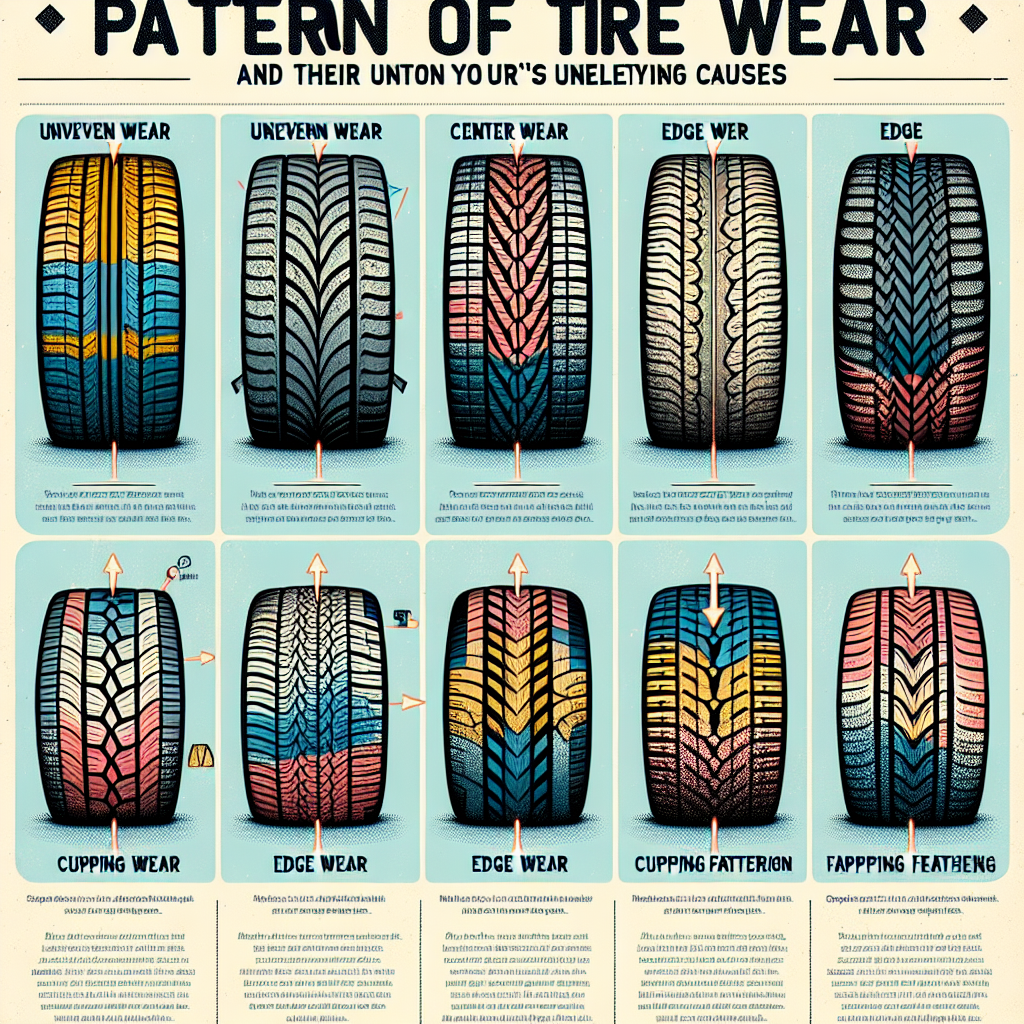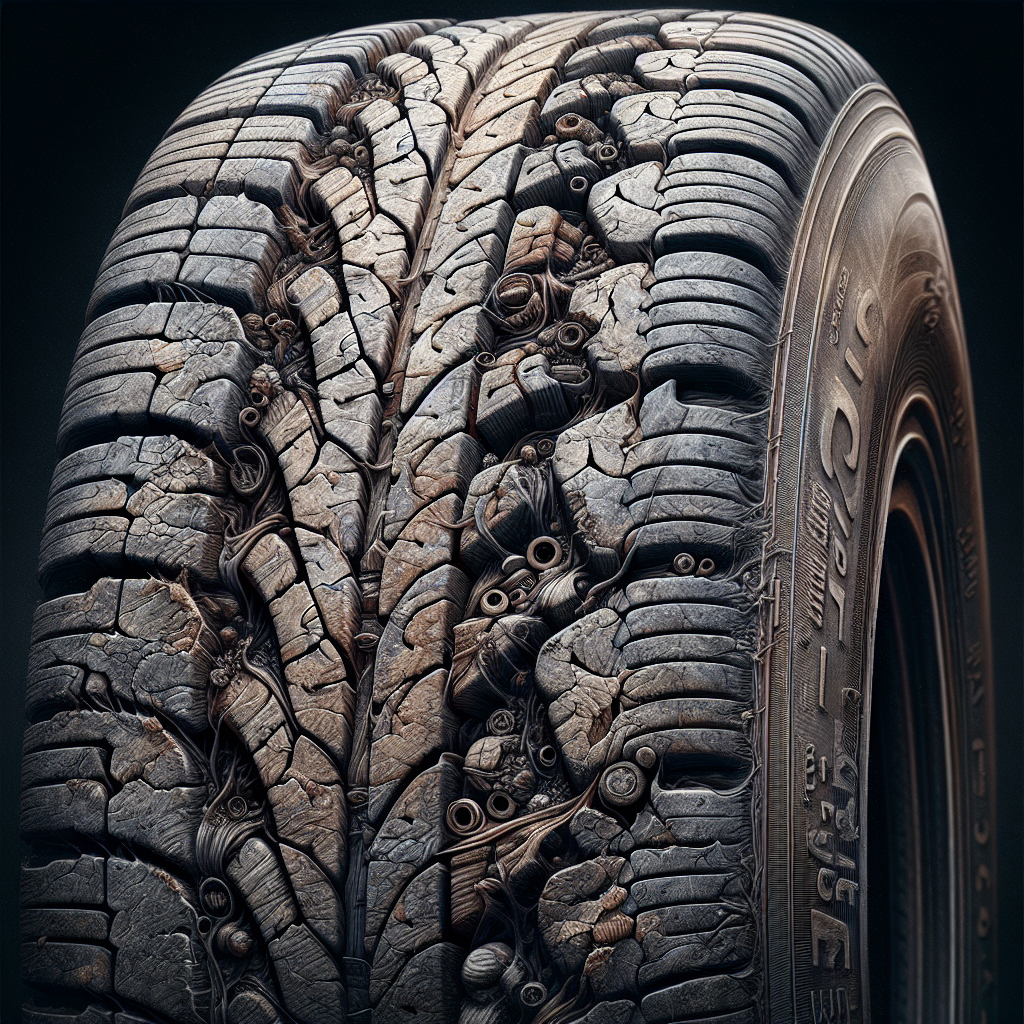Tire wear is a common issue faced by vehicle owners. It's more than just an annoyance; it's a safety concern.
Understanding the causes of tire wear can help you prevent it. It can also extend the lifespan of your tires, saving you money.
In this article, we'll delve into the various causes of tire wear. We'll discuss common wear patterns and what they mean for your vehicle's performance.
We'll also provide tips on how to address and prevent tire wear. This includes understanding the role of wheel alignment and tire inflation.
Whether you're a driver, a car enthusiast, or an automotive professional, this guide will be useful. It's time to take control of your vehicle's health and safety.
The Importance of Recognizing Tire Wear
Recognizing tire wear is crucial for maintaining vehicle safety. Worn tires can lead to reduced traction, making it harder to control your vehicle.
Moreover, understanding tire wear can help you identify potential issues early. This can prevent costly repairs and extend the life of your tires.
Common Tire Wear Patterns and Their Causes
Tire wear patterns can tell a lot about your vehicle's health. They can indicate issues with alignment, inflation, or driving habits.
For instance, uneven wear on one side of the tire often points to alignment problems. This can be due to worn suspension components or incorrect wheel alignment settings.
On the other hand, wear in the center of the tire is usually a sign of overinflation. This causes the tire's middle section to bear most of the vehicle's weight.
Here are some common tire wear patterns and their causes:
- Center wear: Overinflation
- Edge wear: Underinflation
- One-sided wear: Poor alignment
- Cupping or scalloping: Worn suspension components
- Patchy wear: Unbalanced tires
Steer Tire Wear Patterns
Steer tire wear patterns can affect your vehicle's handling. They are often caused by issues with the steering system or alignment.
For example, feathering is a common steer tire wear pattern. It's characterized by the edges of the tread blocks wearing at different rates.
This can indicate problems with the toe-in alignment. Regular checks and adjustments can help prevent this type of wear.
Toe In Tire Wear
Toe in tire wear is another common issue. It occurs when the front of the tires are closer together than the rear.
This can cause the outer edges of the tires to wear faster. It's important to regularly check your vehicle's alignment to prevent toe in wear.
Remember, proper alignment not only extends tire life but also improves fuel efficiency.
Wheel Alignment and Its Impact on Tires
Wheel alignment plays a crucial role in tire wear. Misalignment can lead to uneven tire wear, reducing tire lifespan.
It can also affect vehicle handling and fuel efficiency. Therefore, regular alignment checks are essential for maintaining optimal tire condition and vehicle performance.
Camber and Caster Settings
Camber and caster settings are key components of wheel alignment. Incorrect camber settings can cause wear on one side of the tire.
On the other hand, improper caster settings can lead to difficult steering. Both can significantly impact tire wear and should be regularly checked and adjusted.
The Role of Tire Inflation in Tire Wear
Proper tire inflation is critical for even tire wear. Over-inflation can cause the tire's center to wear more quickly, while under-inflation can lead to wear on the tire's edges.
Regularly checking and adjusting tire pressure can help prevent uneven wear and extend tire life. It's a simple yet effective way to maintain your tires.
How Driving Habits Influence Tire Wear
Your driving habits can significantly impact tire wear. Aggressive driving, such as hard braking and fast cornering, can cause tires to wear unevenly and prematurely.
Conversely, adopting a smoother driving style can help extend the lifespan of your tires. It's a change that can save you money and enhance vehicle safety.
The Significance of Regular Tire Rotation
Regular tire rotation is a crucial part of tire maintenance. It helps ensure even tire wear, extending the lifespan of your tires.
Most manufacturers recommend rotating your tires every 5,000 to 7,000 miles. However, always refer to your vehicle's owner manual for specific guidance.
Tire Wear Indicators and Their Importance
Tire wear indicators, also known as wear bars, are small raised areas in the grooves of your tire. They serve as a visual cue to help you determine when your tires need replacement.
When the tread wears down to the same level as these indicators, it's time to replace your tires. Driving on worn-out tires can lead to reduced traction, increased stopping distances, and in severe cases, tire blowouts.
Preventing tire wear starts with regular maintenance and mindful driving habits. Keeping your tires properly inflated, rotating them regularly, and ensuring your vehicle's alignment is correct can all help reduce wear. Additionally, avoid aggressive driving behaviors such as hard braking and rapid acceleration. These can cause your tires to wear out faster.
To extend the lifespan of your tires, consider using nitrogen instead of air to inflate them. Nitrogen maintains tire pressure better over time, which can help reduce wear. Also, be mindful of the load you're carrying in your vehicle. Overloading can lead to increased tire wear. Always adhere to your vehicle's recommended load capacity.
Preventing and Addressing Tire Wear
Preventing tire wear starts with regular maintenance and mindful driving habits. Keeping your tires properly inflated, rotating them regularly, and ensuring your vehicle's alignment is correct can all help reduce wear.
Additionally, avoid aggressive driving behaviors such as hard braking and rapid acceleration. These can cause your tires to wear out faster.
Tips for Extending Tire Lifespan
To extend the lifespan of your tires, consider using nitrogen instead of air to inflate them. Nitrogen maintains tire pressure better over time, which can help reduce wear.
Also, be mindful of the load you're carrying in your vehicle. Overloading can lead to increased tire wear. Always adhere to your vehicle's recommended load capacity.
When to Consult a Professional
If you notice uneven wear patterns or your tires are wearing out faster than expected, it may be time to consult a professional. They can perform a thorough inspection and identify any underlying issues causing the wear.
Remember, addressing tire wear early can prevent more serious problems down the line. It's always better to be safe and consult a professional if you're unsure about your tires' condition.
Conclusion: The Overall Impact of Tire Wear
In conclusion, tire wear is a critical aspect of vehicle maintenance. It affects not only the performance and safety of your vehicle but also its fuel efficiency and lifespan. Understanding the causes of tire wear and how to prevent it can save you time, money, and potential safety hazards.














.jpg)
.jpg)


0 Comments